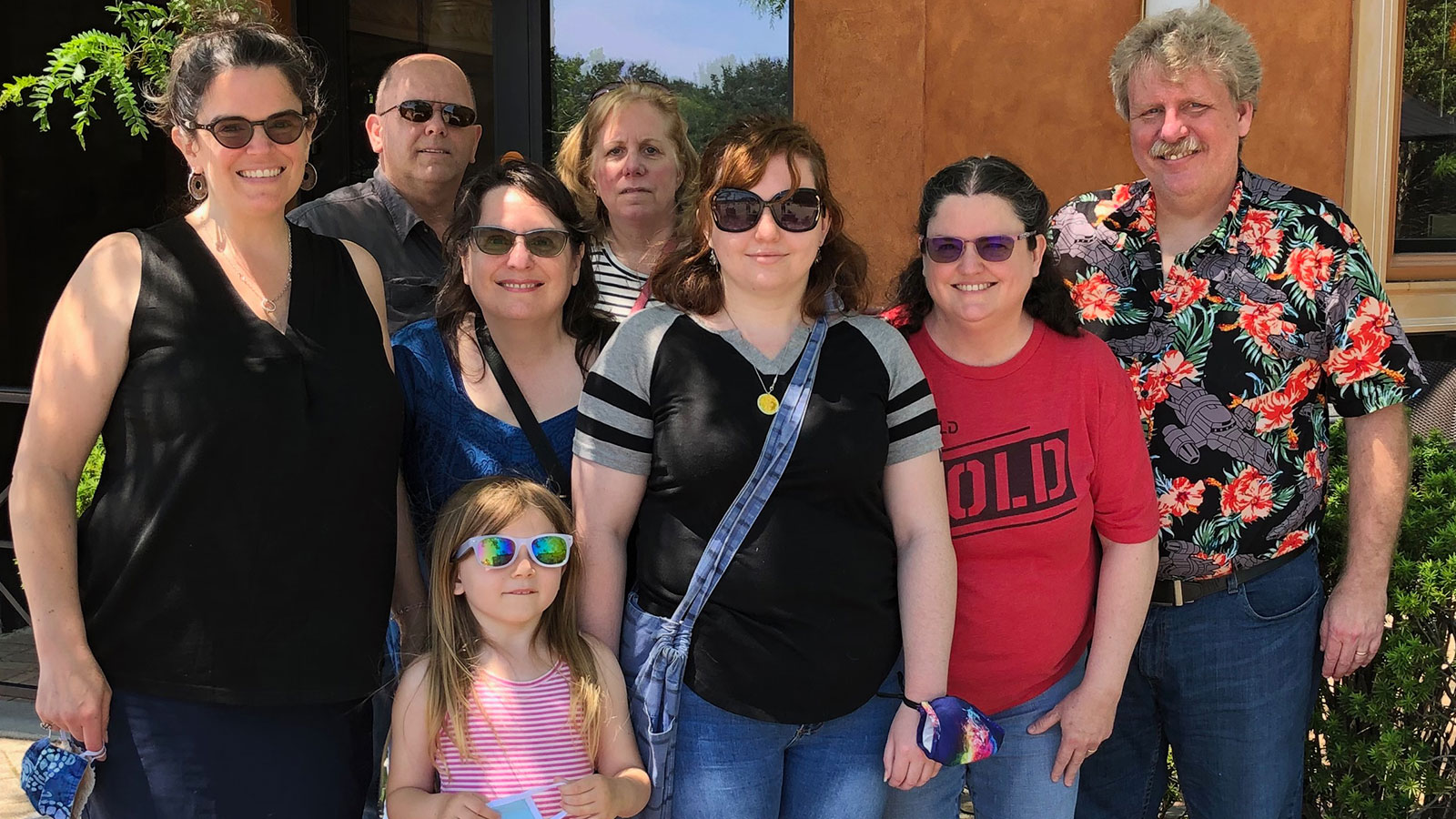
Michael Primm
NASA Citizen Scientist
Washingtonville High School
Rensselaer Polytechnic Institute
Computer and Systems Engineering
Mike is a chief technology officer for a software firm. His new digital telescope came with a suggested NASA citizen science project. He signed up, helped research planets beyond our solar system (also known as exoplanets), and transitioned from space enthusiast to citizen scientist.
"It gave me a way to participate, even if in a small way, in the actual research associated with modern science, versus just taking “pretty pictures” and some self-directed education," he said.
I became involved in citizen science as a way to participate in types of observations I'd never done before – specifically, exoplanets and asteroid occultations. This project transformed my involvement in astronomy from just an interest in taking some astronomical photographs to actually being a scientific pursuit.
The Unistellar telescope project secured NASA funding and evolved into UNITE: Unistellar Network Investigating TESS Exoplanets, where TESS stands for “Transiting Exoplanet Survey Satellite.” I’ve also done some joint observations and work with the Exoplanet Watch project.
I'm a career computer engineer, having been involved in both hardware and software engineering since the late 1980s. I'm currently Chief Technology Officer and primary architect of a pre-funding startup company as well as the primary developer for the company's backend server.
As for hobbies, I'm also involved in computer game modding, particularly Minecraft. I’ve developed many mods for that game. I also administer and develop for a “Game Of Thrones”–based Minecraft server, which recently celebrated its 10th anniversary. I'm also a licensed amateur radio operator, avid video game player, and a tabletop role-playing game player (e.g., Dungeons & Dragons).
I've learned a large amount about the current state of exoplanet observation, including the details of transit method observations. I’ve also learned methods for processing images and the associated data tools like AstroImageJ and EXOTIC, but I’m also learning to leverage code libraries like AstroPy to start developing my own tools.
At this time, I've been a named co-author of two published papers. I’ve also contributed to posters presented at conferences and a few additional papers still in press. In each case, I’ve contributed my observation data to the analysis or discovery being reported on in the paper.
The published papers are:
- “A 16 hr Transit of Kepler-167 e Observed by the Ground-based Unistellar Telescope Network,” which was published in 2022 in The Astrophysical Journal Letters.
- “Utilizing a Global Network of Telescopes to Update the Ephemeris for the Highly Eccentric Planet HD 80606 b and to Ensure the Efficient Scheduling of JWST,” which was published in 2022 in The Astronomical Journal.
I've really enjoyed the UNITE project. Specifically, I’m passionate about the focus on discovering and confirming long-period exoplanets. I feel this is critical work. The common methods used for exoplanet discovery today are biased towards finding big planets with short orbital periods that keep them close to their primary stars. This is a natural consequence of the way spectroscopy and the transit method work, but it means that we are in danger of thinking that these are the most common planets in the universe, when they may not be. Consequently, I think a specific focus on pursuing long-period planets is critical to produce a more statistically significant representation of the demographics of extrasolar systems. Long-period exoplanets are hard to spot, and their underrepresentation in the population of known planets is almost certainly due to the difficulty of spotting them rather than how rare they are. A systematic effort dedicated to finding long-period exoplanets is important to better understand the true demographics of exoplanets and the range of formation processes at work.
Most importantly, I've learned that despite my lack of a Ph.D. in astronomy or astrophysics, and a long and ongoing career in other professional pursuits, I can choose to be involved in and contribute meaningfully to a field that I've had a passion for since I was a child. I never would have guessed that I'd be appearing as a co-author on multiple peer-reviewed astrophysical papers when I became active with citizen science about 18 months ago, and now I'm in six papers – with more in progress.
I've also learned to use my telescope as a true instrument versus a dressed-up camera – to work with FITS files (i.e., a special file format to store, transmit, and manipulate scientific images and metadata) and even to write code to process, calibrate, and analyze them.
Don't think that you need a high level of expertise in order to contribute – some citizen science can be demanding, but others not so much. The UNITE and Exoplanet Watch teams are very supportive and enabling, allowing an aspiring citizen scientist to participate with little more than having purchased appropriate equipment. You can pursue learning as much as you are inclined to, but you can simply participate in observation campaigns and help provide professional astronomers with useful data to do real science. It can be a way to turn a hobby or personal interest into a pursuit, a way to contribute meaningfully to the field you're interested in!
I've been particularly inspired by Dr. Franck Marchis and Dr. Tom Esposito, both of the SETI Institute and the Unistellar science team, as well as Dr. Rob Zellem of the Jet Propulsion Laboratory and Exoplanet Watch project. Franck and Tom's leadership in Unistellar citizen science has been inspirational, and Rob's work on EXOTIC and various joint observational campaigns as well.
Anywhere from one-to-two nights a week, although most of my observation time is multitasked with other work.
Planetary science is a global profession.

